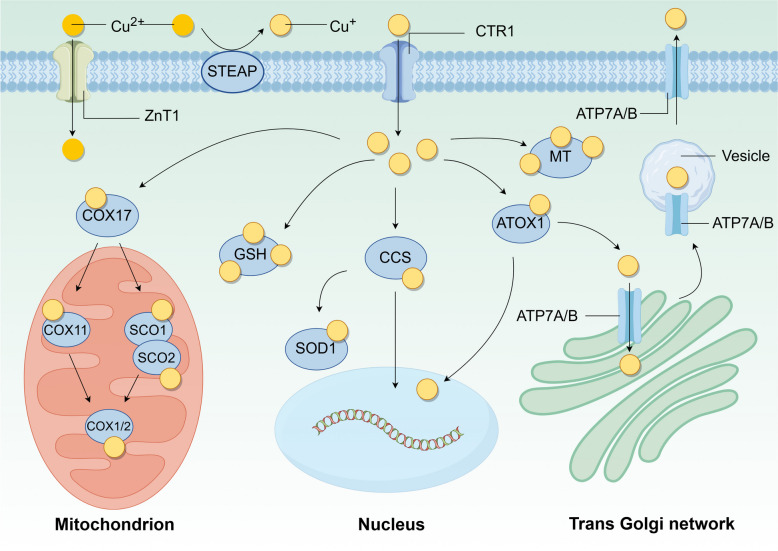Fig. 1.
The mechanism of copper metabolism. The complex metabolic mechanism of copper helps to maintain its homeostasis. Cu2+ can be transported by ZnT1, or Cu2+ is reduced to Cu+ by STEAP on the cell membrane and then transported into the cell by SLC31A1/CTR1. After entering the cell, copper is bound by different copper-binding proteins such as COX17, CCS, and ATOX1 for transportation to different organelles such as mitochondria and nucleus to play its role, and the excess free copper is stored by GSH and MT binding to protect the cell. Copper efflux is handled by ATP7A/B, which is localized on the trans Golgi network

